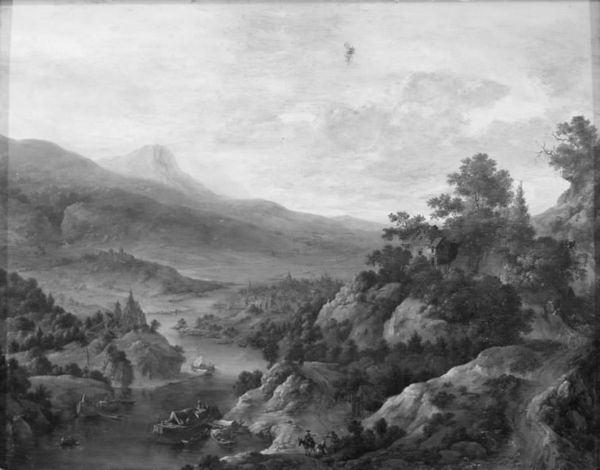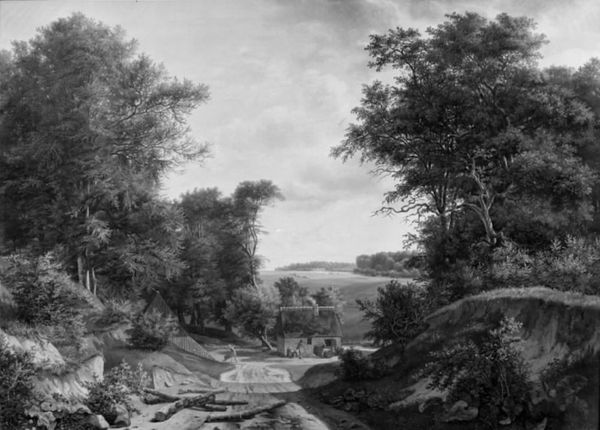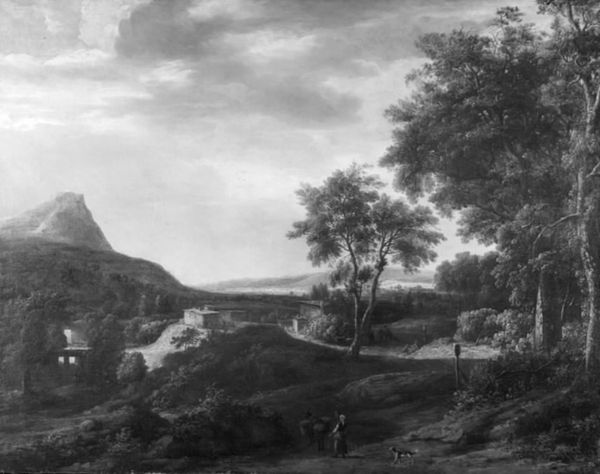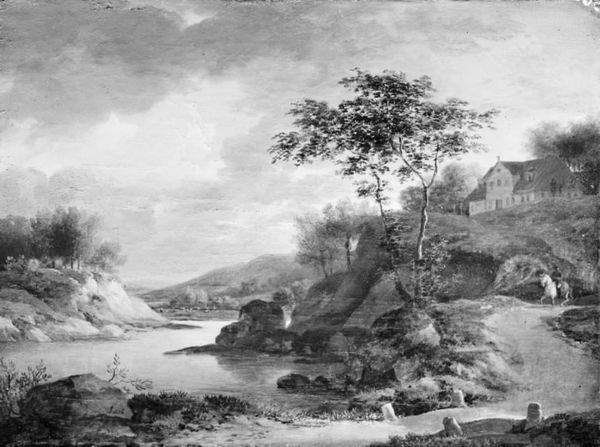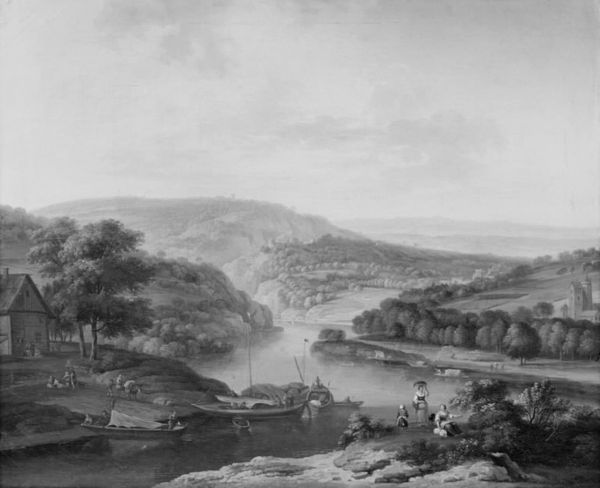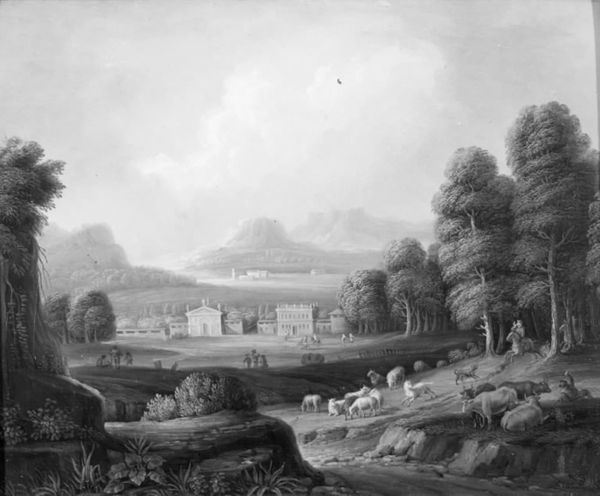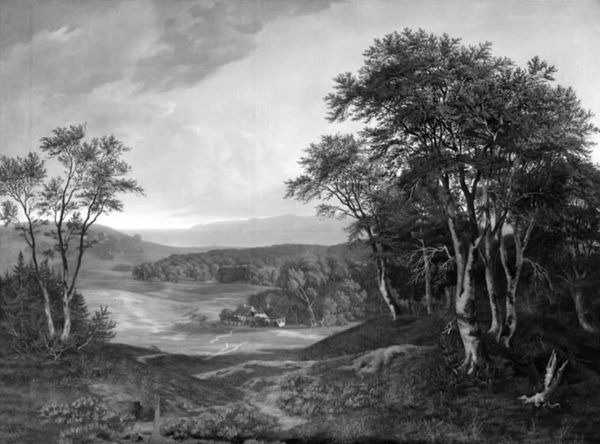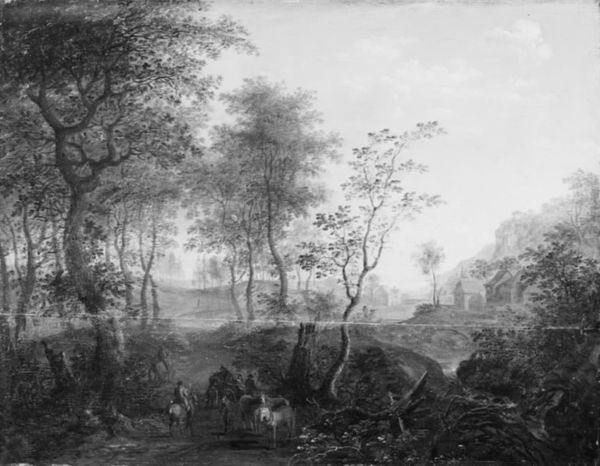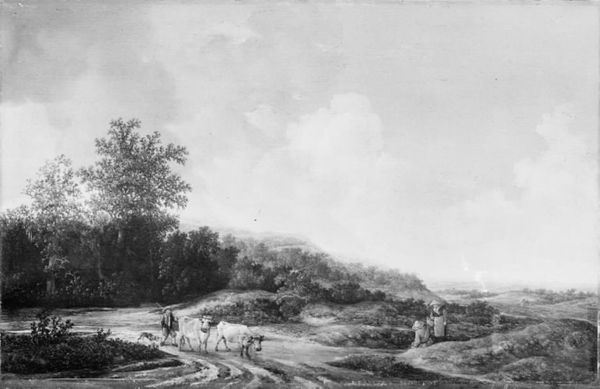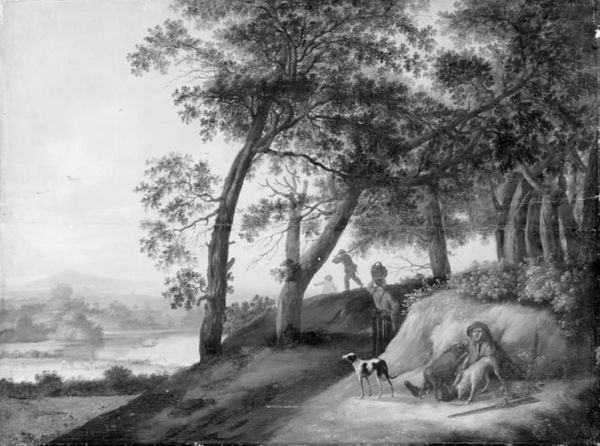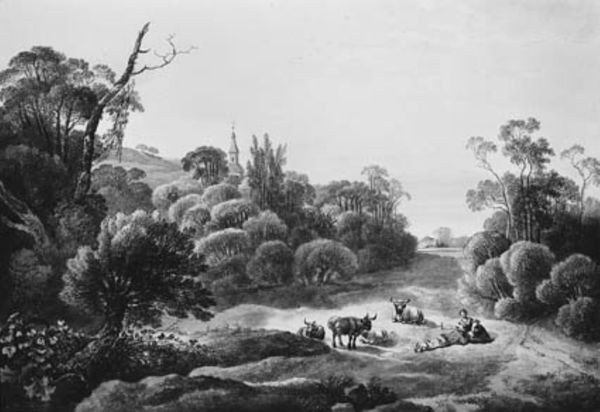
painting
#
dutch-golden-age
#
painting
#
countryside
#
landscape
#
nature
#
realism
#
monochrome
Dimensions: 35.5 cm (height) x 47 cm (width) (Netto)
Editor: Here we have Herman Saftleven’s "Harvest in the Rhineland" from 1669. It's rendered in what appears to be a monochrome palette. There is a definite feeling of community depicted; I wonder about the stories behind it. What catches your eye as you look at it? Curator: What intrigues me most are the underlying themes of labor and leisure, constantly interwoven. Look at how Saftleven uses light and shadow. Notice the activity around the base of the hill in the foreground and how that activity then seems to inform our reading of the village or settlement further away. Does it bring to mind any historical narratives of Rhineland for you? Editor: I see it; the juxtaposition does create a sort of dialogue between the everyday and the idyllic. Knowing it was painted in 1669, I imagine the shadow of the Thirty Years’ War still lingered in memory. Did landscape paintings such as this perhaps offer a form of escapism, a collective longing for simpler times? Curator: Precisely! The Rhineland endured immense devastation during that war. Landscape paintings then become potent symbols, often subtly coded. A seemingly innocent harvest scene might speak volumes about resilience, hope, and the enduring spirit of a people. Consider also the formal quality. Is "Harvest in the Rhineland" unique, or are there are formal and thematic parallels with earlier artworks that are immediately apparent? Editor: I’m starting to understand how seemingly simple landscape painting can speak volumes about historical context and cultural memory. Thanks for bringing that to light! Curator: And I appreciate you pointing out that duality. Thinking about the visual language of hope in a landscape forever changed provides much needed depth to the work.
Comments
No comments
Be the first to comment and join the conversation on the ultimate creative platform.
